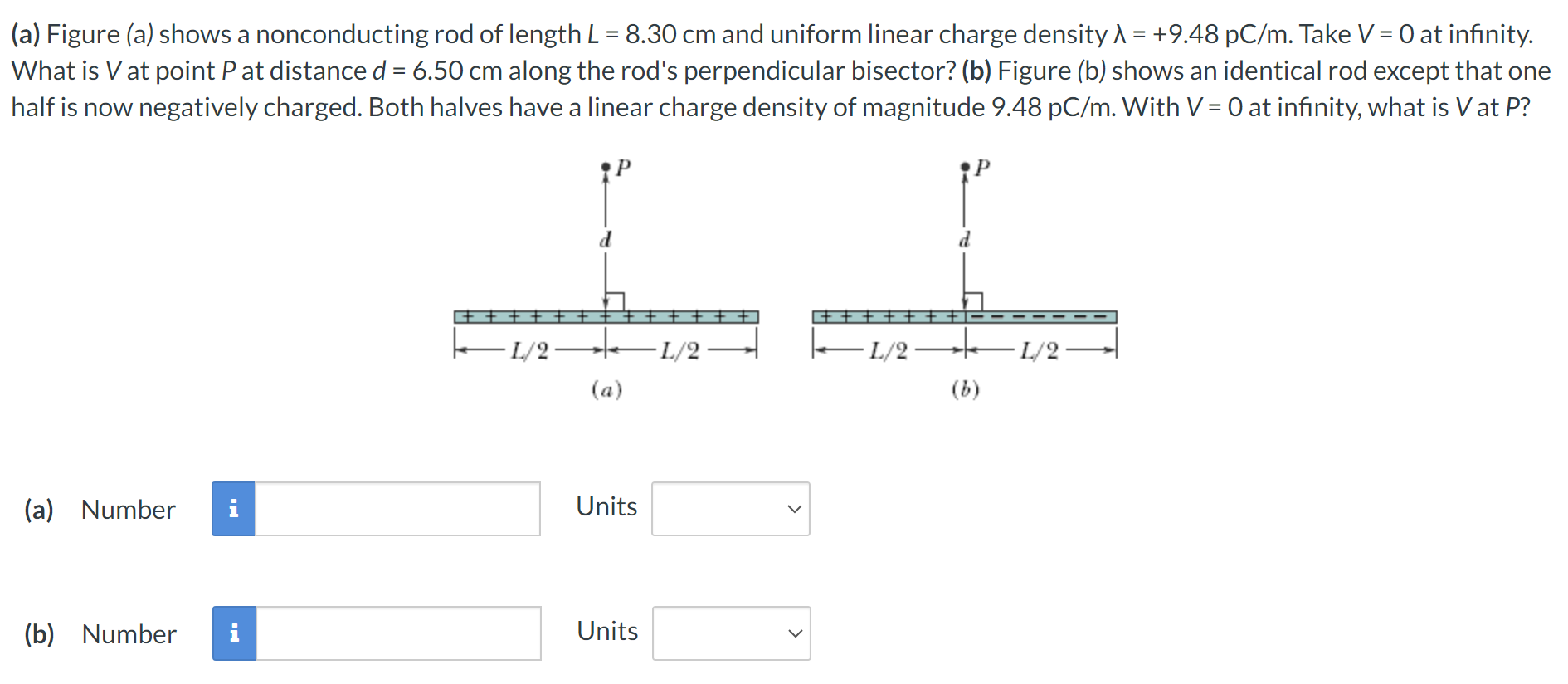(a) Figure (a) shows a nonconducting rod of length L = 8.30 cm and uniform linear charge density λ = +9.48 pC/m. Take V = 0 at infinity. What is V at point P at distance d = 6.50 cm along the rod's perpendicular bisector? (b) Figure (b) shows an identical rod except that one half is now negatively charged. Both halves have a linear charge density of magnitude 9.48 pC/m. With V = 0 at infinity, what is V at P? (a) (b) (a) Number i Units (b) Number Units
